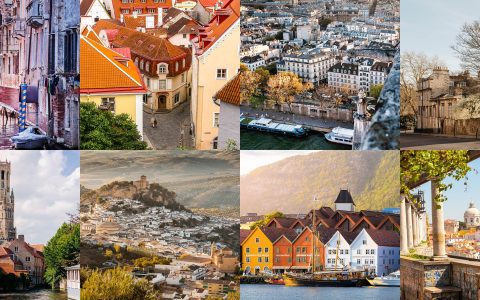Architectural mazes uniquely blend spatial artistry with bewildering navigation. Here are exceptional examples worth planning a trip around:
Historic & Monumental Mazes
- Palazzo Ducale, Mantua, Italy: Explore the labyrinthine corridors of the "Ducal Palace," specifically designed with disorienting paths in the "Horseshoe Courtyard" and surrounding apartments, reflecting Renaissance intrigue.
- Labirinto della Masone, Fontanellato, Italy: The world's largest bamboo maze, conceived by publisher Franco Maria Ricci. Its geometric paths stretch over 7 hectares near Parma, featuring cultural pavilions within.
- Villa Pisani, Stra, Italy: Located north of Venice, this 18th-century garden houses one of Europe's most complex and beautifully preserved hedge mazes. Conquering its nine concentric circles is a classic challenge.
- Underground Citadel, La Rochefoucauld, France: Beneath Château de la Rochefoucauld lies a multi-level subterranean warren of stone passages carved for refuge during medieval conflicts – an authentically atmospheric maze.
- Reignac Castle Maze (Labyrinthe de la Dame), France: Built into the cliff-face near the Vézère River, this unique maze combines gardens, tunnels, and troglodytic chambers inspired by prehistoric sites.
Modern & Artistic Installations
- Snake Path, University of California, San Diego, USA: Alex Israel's winding, mosaic-tiled path scales the hill to Geisel Library, physically manifesting the intellectual journey and offering stunning campus views.
- Ayrshire Light Maze, Dumfries House, Scotland: This contemporary mirrored maze by Hedgescape Ltd, illuminated by LEDs, transforms into a captivating, ever-changing light sculpture after dark.
- Longleat Hedge Maze, Wiltshire, England: While primarily horticultural, its immense size (over 1.5 miles of paths), multiple bridges creating layers, and central viewing tower make it an architectural landscape experience. One of the world's largest.
- Amsterdam Light Festival Canal Maze, Netherlands: A temporary but recurring installation transforming canals into reflective labyrinths using light art on pontoon structures, creating an aquatic puzzle.
These sites offer profound engagements with space, history, and perception, moving beyond simple hedges to true architectural encounters.






